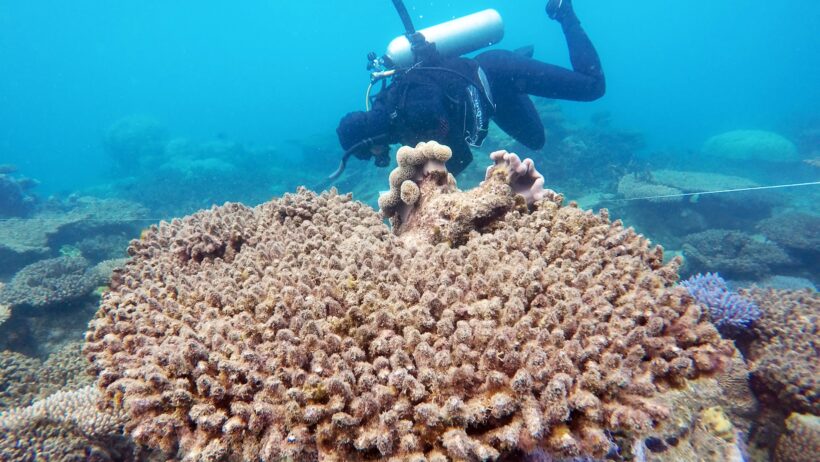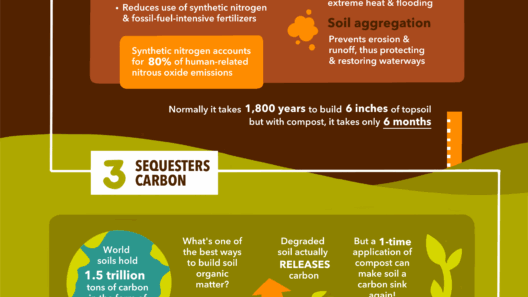Coral reefs are often dubbed the “rainforests of the sea.” This analogy holds profound significance, as these vibrant underwater ecosystems are teeming with life, harboring a staggering variety of marine species. They provide vital coastal protection, enhance biodiversity, and support local economies through tourism and fisheries. However, a growing body of evidence points to a dire threat to these ecosystems: global warming. One of the most visible manifestations of this threat is coral bleaching, a phenomenon that has garnered considerable attention in recent years.
At the crux of the phenomenon of coral bleaching is the symbiotic relationship between corals and zooxanthellae, the photosynthetic algae that live within coral tissues. Corals rely on these tiny organisms for nutrition; in return, the algae receive protection and access to sunlight. Under stress conditions—chiefly elevated water temperatures—corals expel these algae, leading to a stark loss of color and vitality. This process, known as bleaching, not only compromises the aesthetic appeal of coral reefs but also severely threatens their survival. Without their algal partners, corals struggle to obtain sufficient energy, resulting in increased susceptibility to disease and, ultimately, death.
The scientific community has established a robust connection between rising global temperatures and the incidence of coral bleaching events. The Intergovernmental Panel on Climate Change (IPCC) has reported that the average global temperature has risen approximately 1.1 degrees Celsius since the late 19th century, largely attributable to anthropogenic greenhouse gas emissions. Even a modest rise in temperature can lead to coral stress, resulting in widespread bleaching. Consequently, reefs that have historically thrived are now facing unprecedented challenges.
In addition to temperature increases, global warming induces other stressors that exacerbate the bleaching phenomenon. Ocean acidification, a direct result of increased CO2 absorption by ocean waters, poses a significant threat to coral health. As the pH of seawater decreases, the ability of corals to produce calcium carbonate—the building block of their structure—diminishes. This results in weaker skeletons, making corals more vulnerable to environmental changes. Combined with warmer waters, these conditions create a precarious situation for coral ecosystems.
Interestingly, the phenomenon of coral bleaching provides a unique lens through which we can examine broader environmental issues. Many individuals are captivated by the stunning beauty and biodiversity of coral reefs. This aesthetic allure compels people to advocate for their protection. However, the reasons go deeper than mere admiration. The intricate ecological relationships and functions of coral reefs highlight the interconnectivity of marine species and the fragility of ecosystems. Reefs serve as critical habitats for numerous fishes, mollusks, and other marine organisms, which rely on them for food and refuge. Therefore, the health of coral reefs is intricately linked to the overall health of marine environments.
Efforts to combat coral bleaching must address climate change at its root. Policymaking and individual actions aimed at reducing greenhouse gas emissions are critical to mitigate the effects of global warming. Transitioning to renewable energy sources, enforcing stricter emissions regulations, and supporting sustainable practices are essential steps. Moreover, raising public awareness about the impacts of climate change on coral reefs can galvanize community action and foster a sense of stewardship for these vital ecosystems.
In tandem with addressing climate change, there are immediate strategies to enhance coral resilience. Marine protected areas (MPAs) represent one of the most effective tools for safeguarding coral reefs. By restricting human activities—such as overfishing and coastal development—MPAs can help to preserve biodiversity and promote recovery from bleaching events. Restoration efforts, including coral gardening and the development of heat-resistant coral strains, are also on the rise. These innovative approaches aim to rehabilitate degraded reefs and increase their resilience in the face of changing environmental conditions.
Despite grim predictions, the fight for the future of coral reefs is not without hope. Engaging local communities, fisheries, and stakeholders in conservation efforts is imperative. Education programs that illuminate the importance of coral reefs and the effects of climate change can inspire stewardship and action. Employing citizen science initiatives allows individuals to contribute to research efforts and promote awareness about the plight of coral ecosystems.
Coral reefs are facing a monumental crisis, but collective action can turn the tide. Protecting these underwater rainforests requires a multifaceted approach, addressing both the immediate threats of climate change and promoting sustainable practices. The elegant beauty of coral reefs is a clarion call to humanity. It beckons us to reflect on our environmental responsibilities and instills a sense of urgency in our efforts to preserve these extraordinary marine ecosystems. In the fight against global warming and coral bleaching, the interconnectedness of life both above and below the ocean surface serves as a poignant reminder of what is at stake.
In conclusion, the battle against global warming-induced coral bleaching is not just about saving reefs; it’s about preserving the myriad of life forms that depend on them and maintaining the complex interrelationships within marine ecosystems. The future of coral reefs, and indeed the health of our oceans, hinges upon our actions today. Our commitment to fighting climate change and protecting these irreplaceable underwater ecosystems can ensure that future generations inherit a world where coral reefs thrive in all their vibrant glory.








